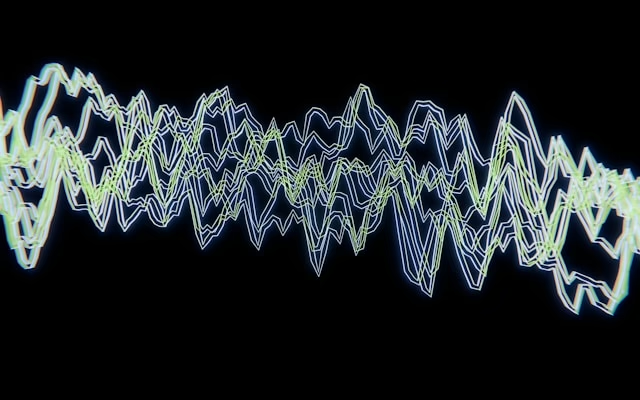🌕 Where nervous system wisdom rewrites the menopause playbook—part of The Reckoning Years series.
You got your labs back.
Everything looks “normal.”
Maybe you’re even on bioidentical HRT now.
But something’s still… off.
You’re tired.
You’re snappy.
You feel unanchored in your own body.
If your hormones are “balanced” but you still feel like a foggy, overstimulated ghost version of yourself—this post is for you.
I once had a client in her 50s who sat in her car before work, staring at the dashboard, too fogged to drive inside. Her labs were textbook. But her body wasn’t lying to her. This is the grief of menopause symptoms: you can “look fine on paper” and still feel wrecked. Because symptoms aren’t mistakes—they’re signals your terrain can’t use the message the hormones are sending.
The Reframe: Hormones Aren’t the Whole Story
Here’s the part no one tells you:
Hormone levels on paper don’t matter if your receptors can’t hear the message.
Your labs might look pristine, but if your terrain is inflamed, braced, or depleted, the signal won’t land. It’s like shouting through a foghorn at someone underwater: the sound exists, but it can’t be used.
Imagine standing on the shore, screaming your name into a storm, hoping someone across the water can hear you. The voice is there, but the medium is broken. Hormones are the voice; your terrain is the medium. If the terrain is choked with inflammation, nervous system noise, or receptor blockage, the message never lands — no matter how “perfect” the lab number.
This isn’t mystery. It’s interface failure.

🔬 The Terrain Roots of Menopause Symptoms
Inflammation muffles hormone receptors, with cytokines like IL-6 and TNF-alpha blunting responsiveness. That’s why you can clean up your diet, check every lab box, and still feel foggy or flat—because the receptors themselves are still jammed.
A nervous system locked in survival mode diverts resources away from repair, reproduction, and rhythm. That’s why the slightest stressor now tips you over the edge—you’re already running on emergency rations.
Gut and liver congestion jams hormone clearance and feedback loops, especially for estrogen. Translation: you might metabolize hormones on paper, but in real life they’re recirculating like static on repeat.
Blood sugar volatility keeps cortisol spiking, scrambling the endocrine handoff. That “3pm crash” isn’t weakness—it’s your brain losing fuel midstream.
And if mitochondria are drained, hormones have no energy source to carry out their work. You can measure estrogen all day long, but without ATP behind it, the effect fizzles.
This is why so many women still struggle with postmenopause symptoms even when their labs look balanced. It’s also why “balanced” numbers don’t guarantee a balanced life.
What It’s Not
- It’s not proof your labs are wrong.
- It’s not moral failure, laziness, or hypochondria.
- And it’s not inevitable decline just because your hormones “dip.”
You don’t feel wrecked because your labs didn’t catch you — you feel wrecked because your system can’t use what’s there. Many women with “low hormones” feel fine. Many women with “ideal labs” still lead in pain. The difference? Terrain.
🌟 Through the Vital Clarity Code Lens
🌱 Regulate
You can’t rebuild clarity on chaos. Regulation is about steadying the ground beneath your feet. That starts with blood sugar rhythm — not swinging from carb spikes to cortisol crashes at 3 a.m. It’s also about circadian honesty: light in the morning, dark at night, and consistent cues so your brain knows where it is in time. Regulation isn’t control. It’s the soil your system grows from. A client once told me that the first shift she noticed wasn’t fewer hot flashes, it was that her mornings stopped feeling like jet lag. That’s regulation at work — small signals that make everything else possible.
🌀 Rewire
This is where static clears. Hormones aren’t broken, but the signal often is. Rewiring means unclogging pathways that carry the message — gut and liver processing, mitochondrial capacity, receptor sensitivity. For one woman, supporting clearance meant fewer migraines; for another, it was learning how to discharge tension in her muscles so her nervous system could finally flip from “on guard” to “at rest.” Rewiring doesn’t look like quick fixes. It looks like rebuilding a communication system your body can actually use.
🔥 Reclaim
Numbers don’t live your life, you do. Reclaiming means refusing the story that “normal labs” equal normal living. It’s naming what you feel and honoring it as real data. Sensitivity isn’t pathology — it’s your system pointing at what’s unresolved. I’ve watched women stop apologizing for their exhaustion, start questioning why they keep overriding, and reclaim nights of real sleep after decades of numbness. Reclaiming is saying: I get to decide what vitality feels like, not a lab printout.
✨ Resonate
When terrain steadies and channels open, symptoms stop screaming. They don’t always vanish overnight, but they lose their jagged edges. Mood steadies into cadence. Energy feels woven rather than borrowed. One woman described it as “hearing myself think again” after years of fog. That’s resonance — not perfection, but coherence. It’s the nervous system humming in rhythm with itself, instead of fighting static.
🪶 Micropractice: Signal Check-In
At the end of the day, ask:
Did my body get to repair, or did it just get through?
Note one moment where you ignored a signal (skipped hunger, overrode fatigue, pushed through agitation). Tomorrow, change that one thing. That’s how capacity rebuilds—small corrections, day by day.
TL;DR
Menopause symptoms aren’t just about low hormones— especially in the postmenopause years. They’re about terrain, receptors, and nervous system capacity. Balanced numbers don’t matter if your body can’t use the signal.
You don’t need to chase perfect numbers. You need a system that can use what it’s given.
Start with a Vital Signal Check →
This post lives within the Menopause Hub, where we decode hot flashes, sleep changes,
weight shifts, libido, and brain fog through the lens of capacity, metabolism & the nervous system.
